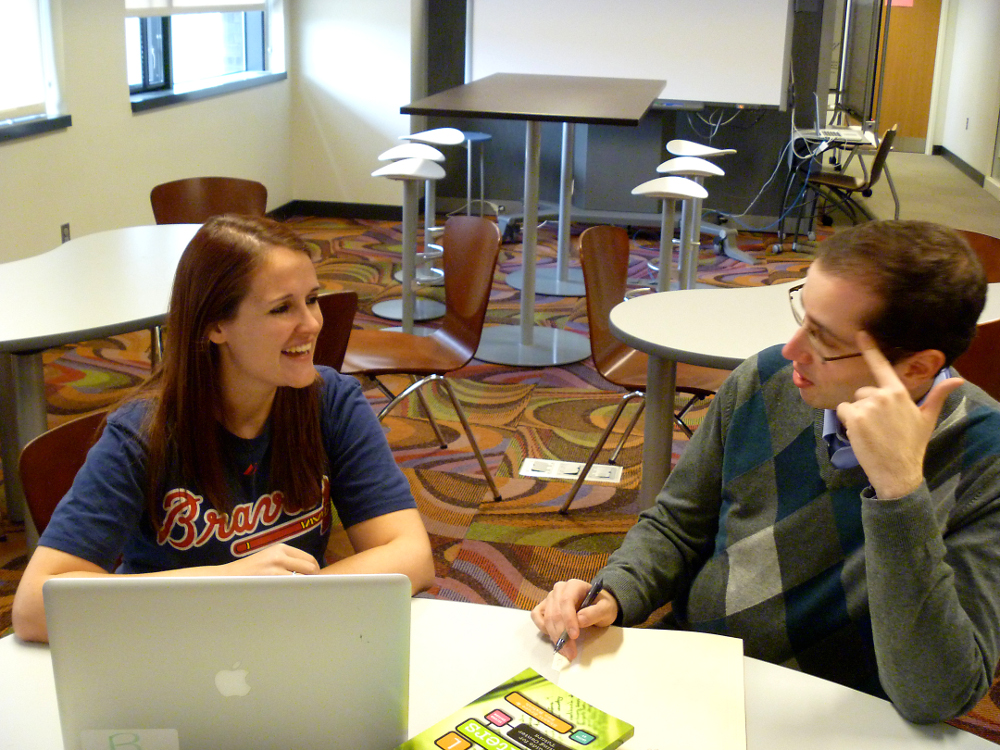IMAGINING IT. BUILDING IT. LIVING IT.
A new model for flexible learning environments
Karen J. Head, Georgia Institute of Technology
Rebecca E. Burnett, Georgia Institute of Technology
Introduction
Imagining It
Building It
Living It
Physical Structure
Mission
Politics of Place
Institutional Structure
Hidden Benefits and Challenges
Our Footprint
Politics of Control
Facilities
Furniture and Equipment
Staffing
Proximity and Staff Work Space
Additional Uses of the Space
Space-Related Research
4.0 LIVING IT: OPENING AND OPERATION OF THE COMMUNICATION CENTER
In August 2011, the Communication Center was in the final stages of completion. Furniture had just been installed, the IT staff was busy connecting and configuring equipment, and unpacked boxes occupied most of the empty floor space. Teams of people had imagined this space, and others had built it; now it was time to actually live in the space. Obviously, some lessons cannot be learned until the “living in it” stage begins.
4.1 The Physical Structure and Core Equipment
The Communication Center is located in its final home—the fourth floor of the G. Wayne Clough Undergraduate Learning Commons—designed and built to be a benchmark for innovative learning facilities. The view from the center looks out a bank of windows over Tech Green (with plantings atop the new cistern system for Clough Commons) directly at the Institute’s iconic campanile.
Figure 17: The Reception area
The reception area (Figure 17) welcomes students to a safe space for help in strengthening their communication skills and strategies—safe physically, psychologically, academically, and intellectually.
Figure 18: The primary tutoring space in the Communication Center enables tutors and tutees to arrange one-on-one or small group sessions. In the background is a tall worktable and SmartBoard for working on posters drafts. Here, Dr. Christopher Weedman works with a student.
CommLab is the primary tutoring space in the Communication Center. It includes a brainstorming space, a one-on-one tutoring space, a space for working on posters, a place for small-group critique, and a computer space. (Figure 18 shows part of the one-on-one tutoring space. Figure 19 shows some of the computer workstations.)
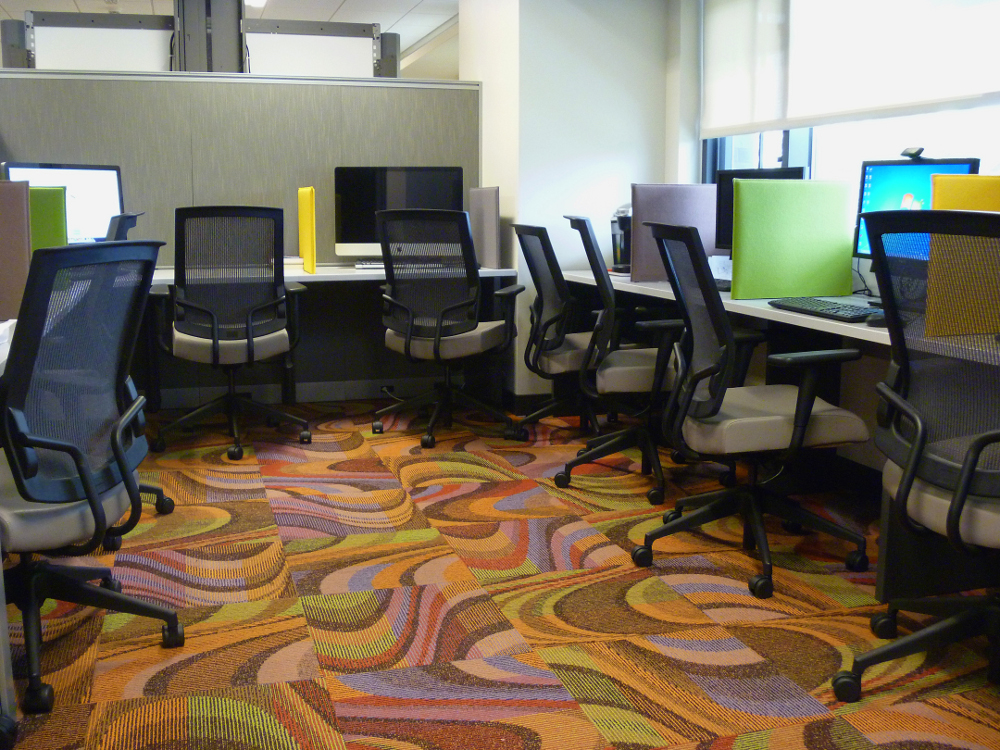 Figure 19: Computer workstations at the CommLab
Figure 19: Computer workstations at the CommLab
Figure 20: A meeting room at the CommLab
The Communication Center includes two meeting rooms (Figure 20), situated on the back wall of CommLab, designed for private tutoring, for small group and team conferences and conversations, and for informal rehearsals.
Figure 21a |
Figure 21b |
Figure 21c |
Figure 21d |
The Communication Center includes four rehearsal studios, each based on a different corporate design with full video capture and playback capabilities—one even has a green screen (See Figures 21a, 21b, 21c, 21d).
A resource room includes tutor lockers, bookcases, and worktables, a room that is private enough to serve as a work area for tutors and large enough to accommodate small workshops of about 20 students.
Figure 22: Doors to the administrative office
The Communication Center includes two administrative offices, situated on the back wall of CommLab. Figure 22 shows the doors to the administrative offices (director’s office on the far left and assistant directors’ office on the far right) and two meeting rooms in the middle.
A large storage room holds portable equipment and movable furniture when not in use.
4.2 The Politics of our Mission
Since Georgia Tech culture had no experience with communication tutoring, how could we quickly teach students about our mission and solicit their help in refining that mission?11 Would we face the same problems other communication or writing centers faced concerning our identity and purpose(s)? Would being new help us? Harm us? Make no difference at all?
One of the most important first tasks was to clarify our mission by writing a formal mission statement—a statement that would help define exactly what living in this space might mean, especially as it pertains to the students who use the space. The overall philosophy for our learning commons is that the building belongs to the students—the adults cede control as much as possible. In this spirit, another team was assembled: one made up of the center’s administrative staff and professional tutors, but led by our peer tutors and the students who were the first to use the space. After several weeks, we reached consensus on the mission statement.
For us, the mission is inseparable from the spaces in which the Center’s activities take place. We have created a safe environment for students to develop identities and rehearse their individual and collaborative performances, a space where technologies and people interact, and a space where high- and low-tech technologies work together. The spaces in our flexible, research-based center are designed for a range of communication activities, including collaborative planning, multimodal tutoring, critique and discussion, artifact development, presentation rehearsals, workshops, meetings, public art displays, music performances (see Figure 24), and demonstrations. 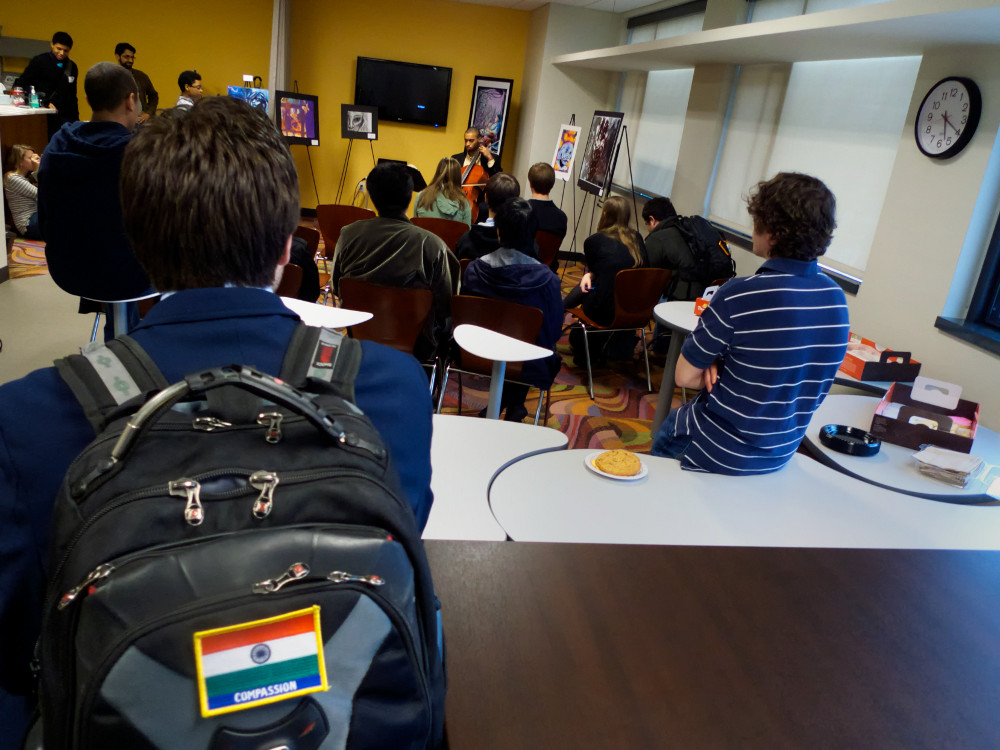
Figure 23: The flexibility of the Communication Center allows the space to be used for a wide range of activities
While we have had many good experiences allowing students to make decisions, we’ve also had some problems with this philosophical approach. Because students have been told they “own” the space, they often take this to mean that they can use spaces in any way they want. This quickly led to doors broken because of forced entry, furniture relocated throughout the building, and a general disregard for purpose-specific use of spaces. Despite these early challenges, our attempts to change campus culture are working—students absolutely want to be in these new spaces. The challenge is getting students to use the spaces appropriately.
4.3 The Politics of Place
The Communication Center’s physical footprint within the building is set, but issues of control between living in the larger space while maintaining disciplinary autonomy are evolving. The process of designing and creating space for a communication center (i.e., an independent academic unit) that resides within a much larger physical space controlled by a variety of constituencies has involved a number of benefits and challenges.
4.3.1 Institutional Structure
Our position in the institution is unique, which further complicates the ways in which we work with others in our learning commons. Because we provide a fundamentally important student service, we are located with other such services in the learning commons space. We also receive our operating budget directly from the Provost’s Office. However, unlike the other student service units, the Center Director is a tenure-track faculty member, which means that she reports through a traditional department and college structure. The Communication Center is not a stand-alone unit (as are many such centers across the country); instead, it is a critical part of the campus-wide Communication and Writing Program, which means coordinating issues related to outcomes, curriculum, and pedagogy. Ultimately, she reports to her chair and her dean, but because of the central nature of the center, she also has a more global responsibility to “report” to other constituencies. This means she must balance these two reporting structures in different ways.
4.3.2 Hidden Benefits and Challenges
Being part of a larger learning commons has a number of benefits. Some conversations on the Writing Center Listserv since our opening have focused on questions about established centers becoming part of larger learning commons units. For example, one such string began in November 2012, when Celia DeWoody posted a message with the subject “Please help us save our Writing Center.” DeWoody was deeply concerned that her center was going to be “absorbed” with other tutoring in a larger learning commons space. Discussions such as these are fraught with anxiety. While we understand the concern about losing autonomy, something we would never give up where actual tutoring is involved, understanding the benefits that come with being part of a larger student-focused commons is important. Both physically and organizationally, some key benefits exist—many of which are actually “hidden.”12
Physically, learning commons are usually centrally located and convenient—meaning students are an integral part of the life within the building. In the case of our learning commons, students are present 24/7. Many students find us because of our location. Our physical location also indicates an implied institutional argument that our services are important because we are housed in this important building.
From an operational standpoint, our Communication Center does not have to provide resources to cover any significant overhead. We are not responsible for electricity or water costs. We do not have to pay for janitorial service. We have the benefit of the building’s security force. A main concierge desk is in the building. We have dedicated technology support. We share a web developer. All of these things are easy to take for granted, but they are very important. However, from a budgeting standpoint, anyone operating a center needs to know who is responsible for such overhead.
Sharing resources, even if you have to pay for some items out of your operating budget, is a good way to get excellent help without the entire burden of cost; just be sure to get in writing how time will be allotted and how projects will be prioritized. In our case, even though we don’t have to pay directly for these costs, we had to find ways to access these resources when other units also want access.
Our Communication Center shares resources with the other campus tutoring service, the Center for Academic Success, the Office of Academic Enrichment, the Center for the Enhancement of Teaching and Learning, and a number of science labs. Together, we have begun to consider how our shared resources serve and do not serve our individual and collective needs. We meet regularly, especially with IT Support, to discuss how we can integrate our systems in ways that are transparent for students but give us flexibility to work with students in different ways.
One example of how shared resources both work and do not work would be our shared access to a web designer. While we do not have any fiscal responsibility for this position (the good part), we are constrained by sharing the person’s time and limitations as to what can be included on our site. Every unit has its priorities, and another unit can monopolize time while the other units wait (sometimes without any sense of what the other projects are). At the end of our first year, we discovered that another unit had used 47 percent of the web designer’s time that spring; we used 11 percent. Many of the projects for our unit were also on the priority list of other units, which is to say, the web designer could have worked on projects that served a variety of units’ needs—a more efficient use of time. However, because no one understood what was actually happening, the web designer’s time was ill-spent working on a single project for a single unit—a project that was ultimately abandoned because of implementation issues. While our current image on the Clough website is strong (see Figure 25), it wasn’t always; we had to correct this particular image because the web designer didn’t check with us about the meaning of “WOVEN” and made up inaccurate definitions on the website. Because the web designer does not report to our unit, that person does not feel a particular responsibility to check designs or details with us. In general, this shared position is problematic because it’s an overt attempt to make everyone in our building use a particular website template; for us, this template isn’t always effective at reaching our primary audience: the students. 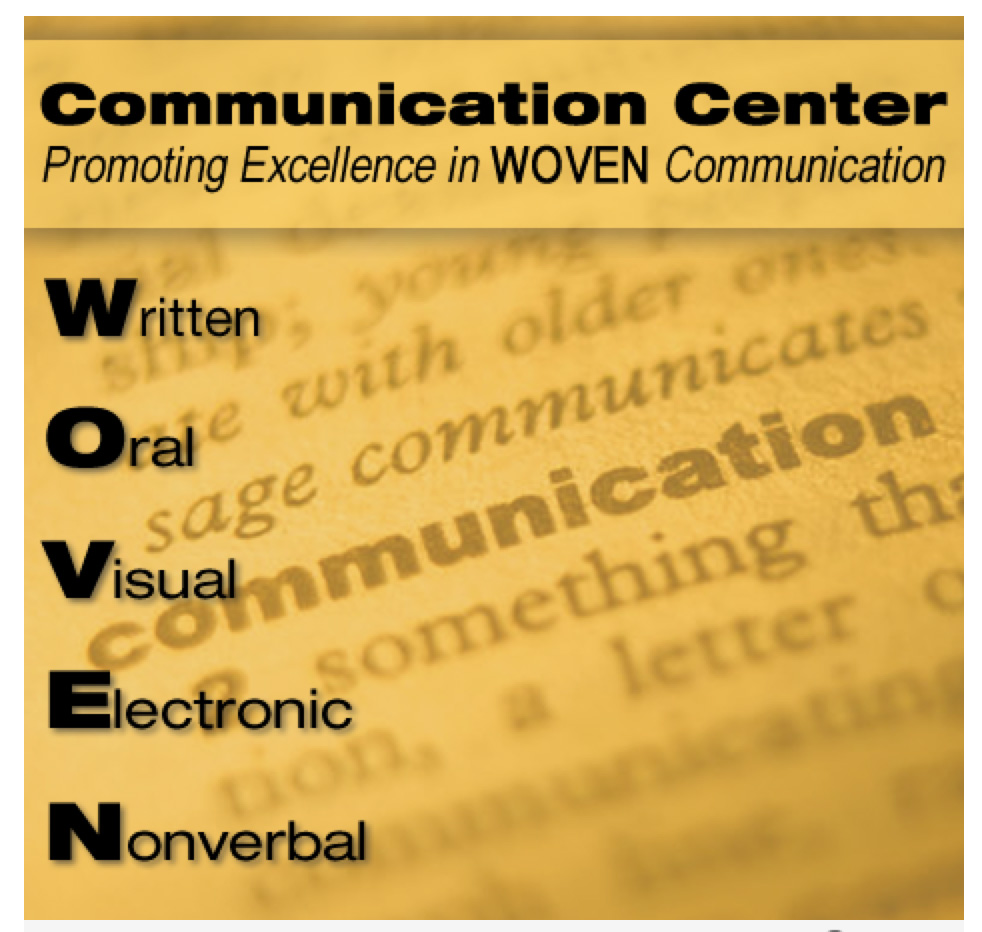
Figure 24: A poster representation of each element in the WOVEN curriculum
In retrospect, we wish we had a clearer sense of how being integrated into a “shared space” would actually work. Essentially, we have discovered that this space functions like a single organism with lots of symbiotic creatures feeding off it—maybe not a nice metaphor, but an apt one. We all benefit from being in this important space, but we also are constrained by rules and regulations particular to this space. In some ways, we are not able to do things without involving all the constituencies, and if we can do things without consulting others, the attitude often exists that we should still consult them.
All the building occupants had to join together to make arguments about changes because more senior administrators and support staff who didn’t work in the building wanted us to adhere to continuity standards developed in the design stage. Anyone directing such a space must allow a kind of trade-off—one that adds complexity to administrating a center because directors must negotiate the communal conditions in exchange for being in a preferred and central space.
4.3.3 Our Footprint
Placement within a building as large as our learning commons is also very important. (See http://clough.gatech.edu/ for a link to Clough’s home page, which gives access to the building factsheet and a readable, visually appealing annual report for the first year of operation.) As we discussed earlier, during the design phase, the Communication Center was relocated several times. In the final design, the center is located on the floor that connects directly with our library. (Refer back to Figure 17 to see the location of the Communication Center in relation to the other units of the fourth floor of Clough Commons.) Being physically close to the library reinforces the idea that resources and communication about those resources belong together. From a tutoring standpoint, this location allows students to move easily between spaces that house many of the resources they use. If necessary, we can easily walk with students into the library and help them find resources, which means that, in some cases, we do not need to duplicate them.
The Communication Center is physically close to the campus tutoring resources for other disciplines. Again, proximity is important. If a student is struggling with, for example, a biology lab report, and we begin to suspect that the science content is flawed, we can easily direct that student to the nearby Center for Academic Success, which is home to the biology tutors. Conversely, if a biology tutor has reviewed a lab report with a student and the science is fine but the communication is ineffective, that tutor can easily direct the student to our center. To further solidify our partnership with the content tutoring group, we share a single scheduling software system. Students make appointments for both centers in the same online system—a system for which the two centers cost-share, another way to trim our expenses.
4.3.4 Politics of Control
Soon after the building opened, we found (to our dismay) that our rehearsal rooms had been re-designated to the general classroom scheduling system maintained by our facilities personnel. The oversight of the building was also being turned over to the Dean of our library because the learning commons building was attached to the library, which had the experience of running a 24/7 building. However, this meant that the team given oversight for the learning commons was comprised of many people who were not part of the design process. Past agreements and understandings about the way spaces would be used were dismissed or ignored. While we have three years of architectural drawings where, for example, our rehearsal rooms are clearly labeled as part of our Communication Center, it did not change the re-designation. As a result, the video capture and playback equipment is insufficiently used, and students seldom realize they have the option of working with a professional or peer presentation tutor during their rehearsals. If the rehearsal studios continued under the auspices of the Communication Center as originally planned, students would be more likely to benefit from the high-tech and human resources available to them.
Even when we decided to make changes within our main Communication Center space, like the reconfiguration of one office to accommodate two desks instead of one, we met with reprimands about not getting approval—even though we used our own operating budget for the furniture, and we made no structural changes to the space. Essentially, we had to develop strategies for doing what we needed to do to meet the demands of our work while also negotiating such changes in a diplomatic way that garnered “buy-in” from others in the building. We continue to foster our diplomatic relationships, documenting instances that help us argue for important changes.
4.4 Facilities
More broadly speaking, some facilities-related issues needed almost immediate attention. Punch-list items, we learned, had varying priorities—and that priority list was not set by us. Missing and non-functioning electrical outlets, incorrectly mounted video cameras, and card-reader malfunctions were some of the challenges we faced. Even after nearly three years, some of these things still do not work. Even simple items, like lights, became a huge problem because they were on poorly conceived motion systems. We still have one small meeting room that plunges into darkness about every three minutes, and the Center Director’s office is usually lit by a small desk lamp because the motion sensors in her office turn off randomly.
One of our biggest concerns was access to the space. Suite access was entirely through a card-reader. Staff, except for the Center Director, did not have keys. The front door was designed without a manual locking system. One evening during a fire alarm (during the first few weeks in the building the solar panels on the roof garden overheated daily), we realized we had no way to evacuate and also to secure our space. With tens of thousands of dollars worth of equipment, we were reticent to simply leave the front door of our suite unlocked during an evacuation. Other unit directors in the building quickly discovered the same problem. After several meetings in which unit directors were told that no work around was possible and that we would not be given access to override the card-reader system, we began seeking unofficial ways to secure our spaces. With the help of locksmiths, we determined that the easiest fix was to replace the handles on the front door, cross-wire the card-reader, and leave our fate to Communication Center staff members who now needed to remember to flip the lock switch at the end of each day. We continued to gain access each morning by using our back door, still on an active card-reader.
Thirty-six months after the building opened, we run a successful and popular Communication Center, but we also remain actively engaged in addressing punch list issues and replacing incorrect equipment and furniture.
4.5 Furniture and Equipment
Our start-up equipment allocation was generous. We opened the center with a SMART Board, a small computer lab (with four Macintosh stations and five PC stations), a small digital display with cable TV access, a large digital information display integrated with the central events system, a half-dozen dual-sided white boards that function as area dividers, and an array of portable equipment, including digital cameras, projectors, audio-recorders, and audio-mixers.
Nevertheless, we immediately began to realize what we had not requested, but definitely needed. The SMART Board did not have speakers. We needed headsets for the computer lab. At the end of the first year, we made several major additions. We purchased a second SMART Board for our Resource Room. Because of the politics of control regarding issues still ongoing with our four main rehearsal rooms, we retrofitted both of the two small meeting rooms in our center and our Resource Room with video-capture capabilities. We also purchased three additional computer workstations, a large flatbed scanner, a large-format plotter printer, a mobile video-conferencing station, iPads, two laptops, a laminator, two card scanners, and a variety of software packages, including those that help us work with students remotely.
On a more practical level, the Center Director’s office had three wall shelves. Given the number of books she had, we requested additional bookcases. The interior design team told us the director’s office could not have bookcases because they were not part of the building furniture selection, a decision we assume was made because there was an assumption that administrators only needed a few shelves. However, as a tenure-track research faculty member, the director definitely needed bookcases. After several arguments, the Center Director went to IKEA and purchased what are now affectionately referred to as her “illegal bookcases.” While the design staff was willing to provide any accommodation for additional equipment, the idea of simple bookcases created much consternation. Even though new spaces offer opportunities to “upgrade,” some design elements, like office layout, may need to remain the same.
We also discovered that we had items we didn’t need. Our storage room had a bank of eight vertical filing cabinets. In an increasingly paperless world, we really didn’t need eight of these. We have since sent five of them to surplus. We also dispensed with some other various pieces of furniture that were not suited to our increasingly open floor plan. 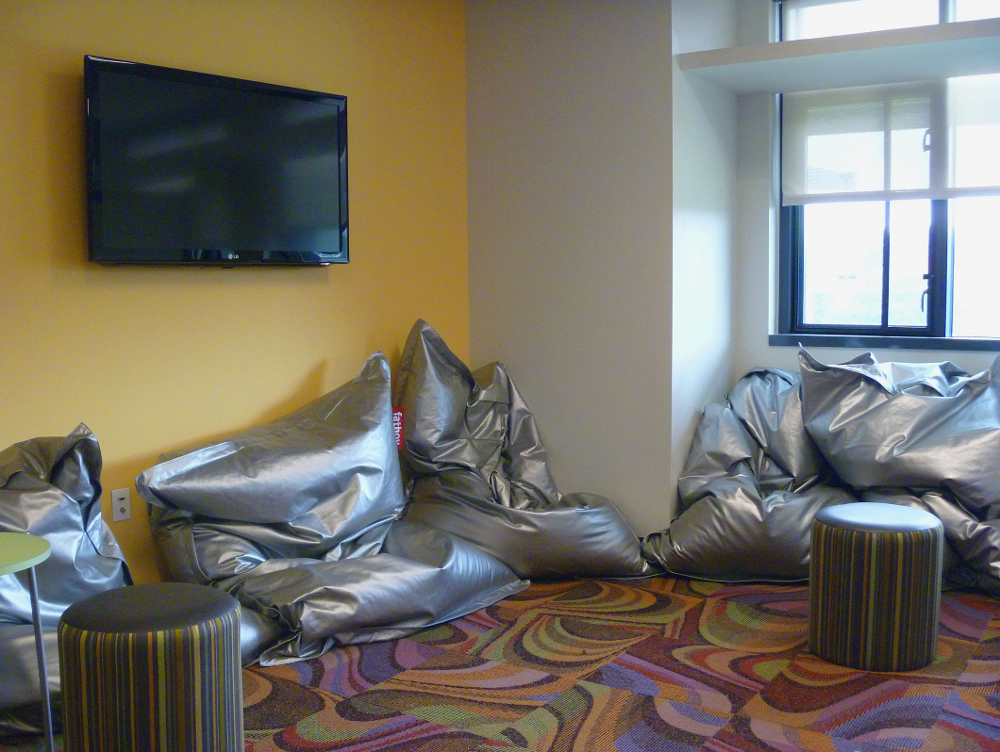
On the plus side, some of the original plans worked well. For example, see Figure 26 for the beanbag chairs currently in the Communication Center; these are much sought after by students for various kinds of conversation, including brainstorming, planning, and reflecting.
Figure 25. Beanbag chairs are popular
4.6 Staffing
Many models exist for staffing a center. Peer undergraduate tutors are common. Graduate student tutors, especially in schools with large MA and PhD programs in English, represent another common model. For many communication centers, professional tutors are often a luxury the budget cannot sustain. When professional tutors are a part of the staffing equation, such tutors are usually drawn from faculty ranks. Georgia Tech is distinctive in that we do not have a traditional graduate program in English; our Writing and Communication Program is staffed almost exclusively with an elite group of 40 postdoctoral fellows.
When the new Communication Center opened, our staffing model placed postdocs at the core of identity and practice. They serve both as professional tutors and as mentors for our peer tutors. As postdocs, they also have teaching assignments. All of these responsibilities, plus their continued research and job searches, require them to balance many identities. This balancing of responsibilities, the chief negotiation being between the classroom instructor and tutor identities, leads to a special set of skills that make our professional tutors an extraordinary student-support group.
The staffing is further enhanced because our postdoc tutors have been joined by colleagues who are partnering with us, as anticipated in the original Task Force discussions. For example, the Language Institute at Georgia Tech (which serves the Institute’s ELL students) provides ELL tutors who work with nonnative students. We have an additional full-time professional tutor who specializes in professional and technical communication. Further, our ability to help students is enhanced by cooperative relationships with the Multimedia Studio and with the Center for Academic Success; as mentioned earlier, we refer students who need specialized technology assistance or detailed disciplinary assistance to these other support units—and they refer students who need help with writing or other aspects of multimodal communication to us.
4.7 Proximity and Staff Work Space
The Communication Center’s internal needs changed before it even opened. We had planned to have a single assistant director for the center, but because that position was not approved as a full-time position, we opted instead to have two part-time assistant directors. Therefore, we had to retrofit an office to accommodate two workstations rather than one. In our second year we were able to get approval for a full-time Associate Director, but decided to retain an Assistant Director and both people continue to share the same office.
From a space standpoint, our staffing model posed some additional challenges. The director, the associate director, and the assistant director found themselves ensconced in offices that were very public spaces. Because floor-to-ceiling narrow windows were next to the office doors, people would peer in, even if doors were closed, to try to attract attention. We have since installed curtains, which help with privacy but significantly diminish outside light because the offices are along the back wall of the Communication Center space.
Our professional staff have offices in other buildings, so they often complain about not having anywhere “to be” when they are not tutoring. Consequently, we have faced problems with people congregating in the computer lab area, which can be distracting for active tutoring sessions. If we were redesigning the space today, we would want to add another area dedicated to staff. Perhaps one reason for this situation is that our Resource Room has become a more public space—one needed for workshops and other group work. It was originally designed for the professional and peer tutors, who needed space for thinking, talking, planning, and training, and it includes lockers for tutors to store personal items. However, as the space’s use evolved, it has also created a “homeless” factor, an explanation for why tutors congregate in our computer lab area. Granted, it is windowless, which is not appealing, but it was a space intended exclusively for tutors, and in changing that we also created a void that remains unfilled.
Essentially all the spaces in the large learning commons building quickly took on a public sensibility, leaving few (if any) private spaces. Because tutors didn’t have a space dedicated to them, a space where they could collaborate and relax, they began to seek out any space where they might do so. Students mirror this reaction when they find a corner where they can retreat. As people consider future design options, the idea of private or defined space might be worth considering—instead of giving over all space to flexibility, which necessarily excludes privacy and dedicated use.
4.8 Additional Uses of the Space
When the initial plans for the space were being considered, some thought was given to our Communication Center being used for purposes in addition to tutoring. The architects always knew this, but they did not always fully understand how these additional interactions would transpire. Our space encourages certain kinds of interaction, especially open forums and group events. We frequently make invitations to various segments of the community to enter our space. In addition to tutoring and workshops, we are part of the annual student ArtCrawl, and we host forums and presentations for many groups. Hosting such events requires attention to two primary considerations:
- Using the flexibility of the space to accommodate each kind of function.
- Using other spaces to continue our main mission, tutoring, while these events happen.
Overall, we have found that hosting these events, while sometimes logistically challenging, encourages people to learn more about our work by visiting our space.
4.8 Space-Related Research Questions and Studies
For us, success comes with our ability to address our mission in various categories, each of which influences and is influenced by space:
- Numbers—How many students do we serve? Does the space accommodate them?
- Services—Professional tutoring? Peer tutoring? Workshops? Class visits? Does the space enable these services?
- Demographics—How well are we serving every population on campus? Can intended populations find their way to our space?
- Culture—How well are we defining our mission in a way that fits (or challenges) the current university culture? How well are we serving the variety of students represented at our university?
- Budget—How do we “earn” our centrally granted budget allowance through the services we provide?
- Availability—What are our days and hours of operation? How well is our availability supported by the building?
- Satisfaction—What feedback do we receive from students? From faculty? How many repeat visits do students make? What space features could improve or enhance satisfaction?
- Research—What projects are underway? What presentations and publications have been completed? How does the space support our research?
- Acknowledgments—Press releases? Awards? What kind of attention does the space receive in publicly released information?
We have several ongoing studies to help us find answers to these questions and help us continually reflect on our progress, reframe our mission, and renovate our spaces.

